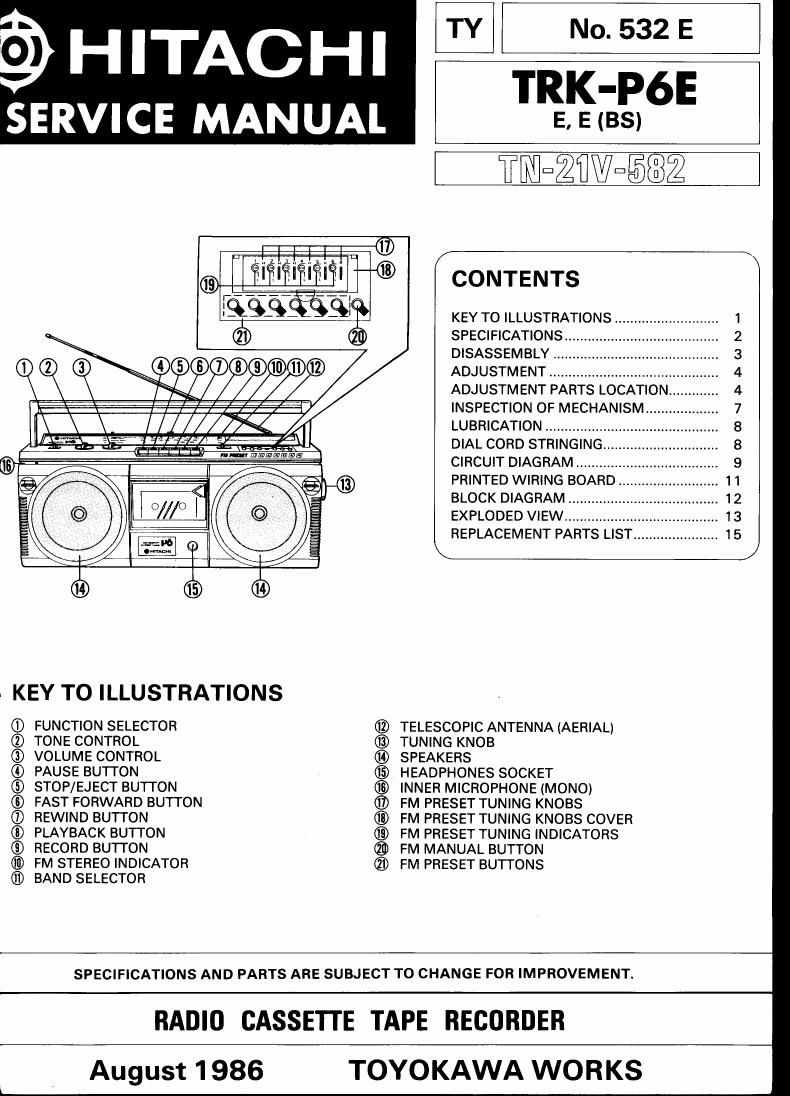Hitachi TRKP 6 E Service Manual
This is the 22 pages manual for Hitachi TRKP 6 E Service Manual.
Read or download the pdf for free. If you want to contribute, please upload pdfs to audioservicemanuals.wetransfer.com.
Page: 1 / 22
